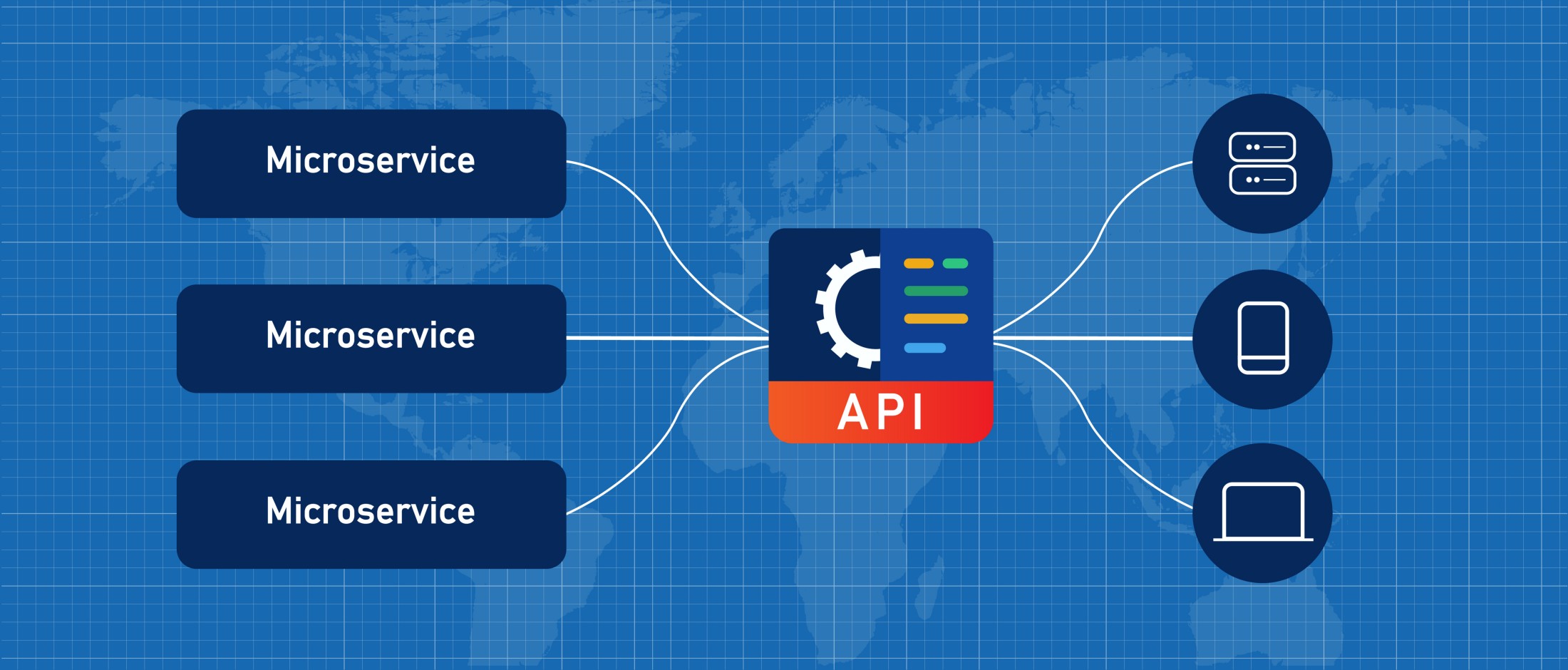When developing a web application, the chosen architecture significantly impacts its scalability and maintainability. Two main architectural styles dominate the field: Monolithic and Microservices architectures. Each has its own advantages and challenges.
A Monolithic architecture is the traditional model for designing applications. All components—user interface, business logic, and data access layers—are interconnected in a single codebase. This unified approach simplifies initial development and deployment but can complicate scalability and maintenance as the application grows. Scaling a monolithic application requires scaling the entire system, and updates often affect multiple components, increasing the risk of bugs.
A Microservices architecture divides the application into smaller, independent services, each with a specific function. These services communicate via well-defined APIs and can be developed, deployed, and scaled independently. This modular approach enhances scalability, allowing each service to scale according to its needs without impacting the whole system. Maintenance becomes more manageable since changes to one service typically do not affect others, reducing the risk of widespread issues.
The choice between Monolithic and Microservices architectures profoundly affects scalability and maintainability. Monolithic applications are easier to develop initially but face significant challenges as they scale. Microservices, on the other hand, offer better scalability and maintainability, enabling faster development cycles and more resilient applications, albeit with increased complexity in service management and orchestration.
Benefits of Microservices
Scalability & Independent Deployments
One of the primary benefits of Microservices architecture is the ability to independently scale different components of an application. Unlike Monolithic architectures, where the entire application must be scaled as a single unit, Microservices allow each service to be scaled individually based on its specific needs. For instance, if a particular service experiences high traffic, only that service can be scaled without affecting the others. This targeted scaling optimizes resource utilization and reduces costs.
Moreover, Microservices simplify the deployment process. Updates and new features can be deployed to individual services without requiring a full system redeployment. This reduces downtime and minimizes the risk of introducing errors that can affect the entire application.
Independent deployments enhance flexibility and responsiveness, enabling businesses to adapt quickly to changing requirements and market conditions.
Faster Development & Innovation
Microservices architecture fosters faster development and innovation by allowing teams to work on different services simultaneously. In a monolithic setup, teams often face bottlenecks as they wait for others to complete their tasks before they can proceed. Microservices eliminate these dependencies, enabling parallel development.
This parallelism not only accelerates development but also reduces the time-to-market for new features. Each team can develop, test, and deploy their service independently, which means new functionalities can be released more frequently and reliably.
This agile approach to development promotes continuous innovation and helps businesses stay competitive in a fast-paced market.
Improved Fault Tolerance & Maintainability
The isolation of services in a Microservices architecture leads to better fault tolerance. If one service fails, it does not necessarily bring down the entire application. The failure is contained within the specific service, allowing the rest of the application to continue functioning. This isolation enhances the resilience and reliability of the application, ensuring better uptime and user experience.
Maintainability is also significantly improved in a Microservices architecture. Since each service is a separate, modular component, it can be updated or replaced independently without impacting other services. This modularity simplifies debugging and troubleshooting, as issues can be traced back to specific services.
Additionally, the use of well-defined APIs for communication between services ensures that changes in one service do not inadvertently affect others, further enhancing maintainability.
Challenges of Microservices
Increased Complexity
Adopting a Microservices architecture introduces significant architectural and operational complexity. Unlike Monolithic applications, where all components are part of a single codebase, Microservices consist of numerous independent services, each with its own codebase, database, and deployment pipeline. This decentralization requires a robust architecture to manage service interactions, data consistency, and communication protocols.
For teams transitioning from Monolithic architectures, the learning curve can be steep. They must understand concepts like service discovery, load balancing, and inter-service communication, which are not typically concerns in a Monolithic environment. Additionally, the shift often necessitates a cultural change within the development team, emphasizing collaboration, continuous integration, and delivery practices.
Distributed System Management
Managing and orchestrating a distributed system of Microservices presents its own set of challenges. Each service must be deployed, monitored, and maintained independently, which can become overwhelming as the number of services grows. Ensuring consistent performance, managing service dependencies, and handling failures across a distributed system requires sophisticated orchestration and management tools.
Tools like Kubernetes, Docker Swarm, and Apache Mesos can help manage these complexities by automating deployment, scaling, and operations of application containers. Additionally, adopting practices such as centralized logging, distributed tracing, and robust monitoring (using tools like ELK stack, Prometheus, and Jaeger) can provide visibility into the system and help diagnose issues quickly.
Testing & Debugging Overhead
Testing and debugging in a Microservices architecture are inherently more complex than in a Monolithic setup. Each service must be tested individually and in combination with other services to ensure they work together seamlessly. This necessitates comprehensive testing strategies, including unit tests, integration tests, and end-to-end tests, to cover various interaction scenarios between services.
Debugging is also more challenging due to the distributed nature of Microservices. An issue in one service can have cascading effects on others, making it difficult to pinpoint the root cause. Implementing best practices such as using consistent logging formats, employing distributed tracing, and maintaining comprehensive documentation of service interfaces can help manage these challenges. Tools like Zipkin and OpenTelemetry can provide insights into service interactions, helping developers trace and resolve issues across the system.
Ideal Use Cases for Microservices
High-Traffic & Evolving Applications
Microservices architecture shines in scenarios where high scalability is crucial. Applications that experience fluctuating traffic volumes or rapid growth can benefit immensely from the ability to scale individual services independently.
For example, an ecommerce platform might need to scale its payment processing service during peak shopping seasons without affecting other parts of the application. Similarly, a streaming service like Netflix can scale its video encoding and delivery services separately to handle increasing user demand.
In these high-traffic environments, Microservices enable the efficient allocation of resources, ensuring that critical services remain responsive and performant. The ability to deploy updates to specific services without disrupting the entire system also supports continuous improvement and adaptation to user needs.
Examples of applications that benefit from Microservices architecture include:
- eCommerce platforms like Amazon or Shopify, where different components such as user accounts, product catalogs, and payment systems can be scaled independently.
- Streaming services like Netflix or Spotify, where different services handle content delivery, user recommendations, and account management.
- Social media platforms like Twitter or LinkedIn, where user interaction services, feed generation, and messaging systems require independent scaling to handle varying loads.
Complex Systems with Multiple Teams
Microservices architecture is particularly advantageous for complex systems managed by large, distributed teams. In a traditional Monolithic architecture, different teams often struggle with coordination and dependency management, leading to bottlenecks and slower development cycles. Microservices mitigate these issues by allowing teams to own and manage their services independently.
Each team can develop, test, and deploy its service without waiting for other teams to complete their work. This autonomy accelerates the development process and reduces the risk of conflicts. Additionally, the modular nature of Microservices makes it easier to incorporate changes and innovations, as updates to one service do not necessarily impact others.
For projects with diverse and evolving requirements, Microservices provide the flexibility needed to adapt quickly. As business needs change, new services can be developed and integrated without overhauling the entire system. This adaptability is crucial for industries like finance, healthcare, and technology, where regulatory changes, technological advancements, and market dynamics require continuous evolution.
Benefits for projects with multiple teams include:
- Enhanced collaboration: Teams can work in parallel on different services, reducing dependencies and increasing productivity.
- Increased agility: The ability to deploy updates independently enables faster response to market demands and user feedback.
- Improved innovation: Teams can experiment with new technologies and approaches within their services without affecting the overall system.
Making the Right Architectural Choice
Choosing the appropriate architecture for your application is essential for long-term success. Both Monolithic and Microservices architectures have their unique advantages and challenges, and the decision should be based on your specific project needs and objectives.
When deciding between Microservices and Monolithic architectures, consider the following factors:
-
Scalability Requirements: If your application is expected to handle high traffic volumes and requires frequent updates, Microservices might be the better choice due to its independent scalability of services.
-
Development Team Structure: For large projects with multiple teams working on different components, Microservices facilitate better collaboration and faster development. Conversely, smaller teams or projects might benefit from the simplicity of a Monolithic architecture.
-
Project Complexity: For complex systems with diverse and evolving requirements, Microservices provide the flexibility to adapt quickly and incorporate new technologies. Simpler projects with fewer components might be more efficiently managed with a Monolithic approach.
-
Resource Availability: Consider the expertise and resources available within your team. Microservices require a robust understanding of distributed systems, orchestration tools, and best practices for testing and debugging.
By carefully evaluating your project's specific needs and constraints, you can make an informed decision that aligns with your business objectives and technical capabilities. Whether you choose a Monolithic or Microservices architecture, the goal is to build a scalable, maintainable, and resilient application that meets the demands of your users and market.




